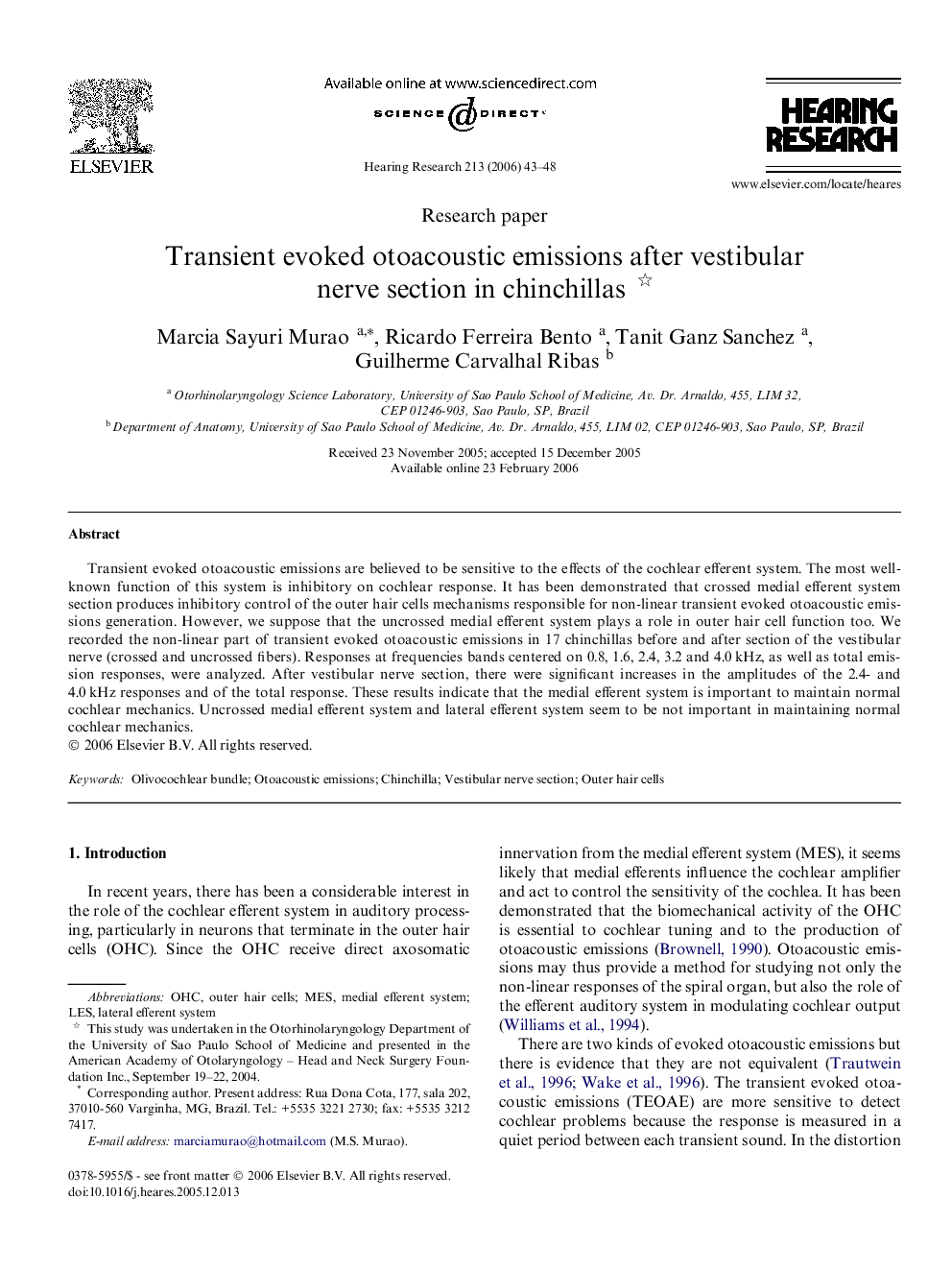| Article ID | Journal | Published Year | Pages | File Type |
|---|---|---|---|---|
| 4356536 | Hearing Research | 2006 | 6 Pages |
Transient evoked otoacoustic emissions are believed to be sensitive to the effects of the cochlear efferent system. The most well-known function of this system is inhibitory on cochlear response. It has been demonstrated that crossed medial efferent system section produces inhibitory control of the outer hair cells mechanisms responsible for non-linear transient evoked otoacoustic emissions generation. However, we suppose that the uncrossed medial efferent system plays a role in outer hair cell function too. We recorded the non-linear part of transient evoked otoacoustic emissions in 17 chinchillas before and after section of the vestibular nerve (crossed and uncrossed fibers). Responses at frequencies bands centered on 0.8, 1.6, 2.4, 3.2 and 4.0 kHz, as well as total emission responses, were analyzed. After vestibular nerve section, there were significant increases in the amplitudes of the 2.4- and 4.0 kHz responses and of the total response. These results indicate that the medial efferent system is important to maintain normal cochlear mechanics. Uncrossed medial efferent system and lateral efferent system seem to be not important in maintaining normal cochlear mechanics.
